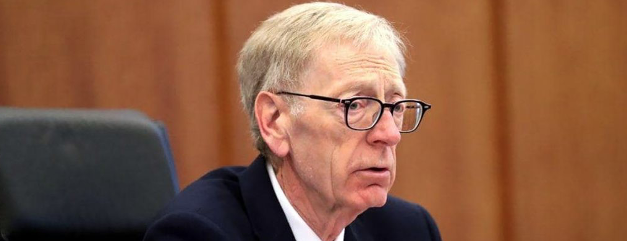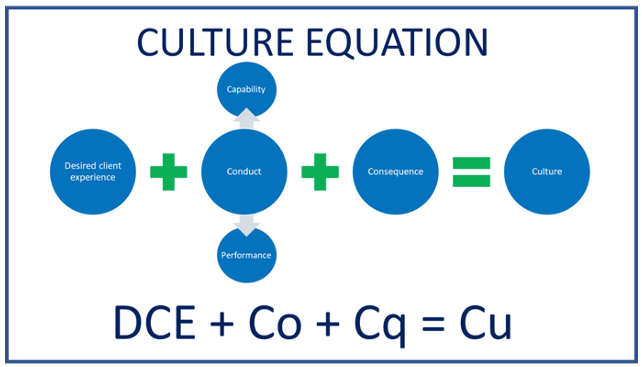
Culture on trial
Thanks to the Royal Commission into Misconduct in the Banking, Superannuation and Financial Services Industry, board directors and executives across Australia are dissecting organisational culture. This is simultaneously a blessing and a curse.
As a two-decade leadership and culture professional, I am delighted to see this most critical area of organisational life, one that I am deeply passionate about, finally being recognised for its importance.
The challenge of course is that everybody is an expert. And everybody has the fix. And none of us are contributing to poor culture, but if you look over there…
Optimistically, we should celebrate that strengthening organisational culture is now on the agenda and move swiftly so as not to miss the opportunity. The Hayne Royal Commission final report will be handed down at the start of February 2019. By my reckoning, this will open a window for change that will last around 12 months before organisational attention spans are exhausted. During that time, the need to be seen to be doing something will result in enormous amounts of money spent chasing the unicorn, often with little tangible return on investment.
What my years in this professional field have taught me, is that every organisation is simultaneously different and the same. Organisational leaders often insist that they have unique circumstances, but in truth, organisations are made up of people, and human behaviour and motivation is entirely consistent. Therefore, the approaches to strengthening culture remain consistent, whatever the circumstances.
Here are some thoughts that might guide a program of cultural transformation.
Culture is a system
When we try and describe desired culture, we often struggle and end up describing something quite abstract, making it difficult to pursue. My perspective is that culture is the system of conduct and consequences that operate in every business. Sometimes the system attributes are clear but more often they are not. Expressed another way, culture is an outcome that follows a series of inputs and outputs. The inputs and outputs must be systemically designed and managed to increase the likelihood of achieving desired outcomes.
To describe desired culture, start with a conversation about organisational purpose and success. What are the underlying assumptions about purpose and success in your organisation? What do individuals and groups need to do to be successful here and is that consistent with the organisational ambition?
From here we can develop a narrative of actual culture verses desired culture. Actual culture must be described realistically from the outset. Identifying the sacred cows that stand between desired and actual culture takes courage but creates an important platform for change.
So, what are the inputs and outputs that lead to culture?
Input A: Clarity of desired client experience
The Hayne Royal Commission provides important daily insights if you listen closely to the executives giving evidence. They mostly use the language of ‘products’ and rarely use the language of ‘client experience’. It’s a trick they play to insulate themselves for the impact of their behaviour. This is what I call ‘inside-out’ thinking. When executives use inside-out language, they limit the organisation’s thinking about culture.
Describing the desired client experience requires ‘outside-in’ thinking and language. It forces participants to walk in the shoes of the customer and when done well, has a transformational impact on behaviour.
Customers will describe their desired experience, but you must ask them first (don’t assume) and then you must describe, in detail, what components, make up that desired experience.
Ensure everybody in the organisation participates in conversations about desired client experience.
Input B: Conduct described through performance and capability standards
Delivering the desired client experience requires the internal performance and capability standards to be carefully described along the value chain. This is where great OD practitioners are worth their weight in gold. The activities that deliver the desired client experience need to be described and the minimum acceptable standards must be clear.
To achieve those standards, we must also describe the capabilities required from the people who will deliver those activities. Work out what these capabilities are and how will we systemically train and supervise our people to deliver to those standards?
The combination of performance and capability standards are what I categorise as conduct. Unless the desired conduct is clear, then variations in quality will occur, with the team eventually settling at the level of the lowest acceptable variable standard, built around the organisational consequence system.
Output C: Consequences
Consequences are the Achilles’ heel in Australian corporate culture and at the heart of the failings of the financial services sector. We need to take a systemic approach to designing how we recognise, reward, punish and ignore the conduct that occurs in our organisations.
Having described the desired client experience, and the expectations of conduct, there must be a system of acquittal. These are our consequence systems.
There are many questions to answer regarding consequences:
What do we recognise? How and how often is this done? Do we have formal recognition systems? What role does the hierarchy play in formal and informal recognition?
What do we reward? How are pay and financial rewards arranged? What systems of non-financial rewards are in place? What standards of conduct trigger rewards? Are reward systems quantitatively or qualitatively based?
What conduct is unacceptable and requires the deployment of integrity processes? How are complaints dealt with? Do staff have confidence in internal integrity systems? What really happens to employees when they complain?
What do we overlook? What conduct do we put up with that effectively sets the minimum standard? Where do we have inconsistencies or blind spots? As leaders, what commitments have we made about supporting each other to minimise inconsistencies?
The culture equation
Culture is therefore the outcome of the desired client experience, plus conduct, plus consequences. I used the inputs and outputs and created the culture equation, as an illustrative way to express the sequencing.

Final thoughts
All employees want to work in a great culture, but most do not understand how to play their part in delivering it. By describing culture as a system and expressing it through the culture equation, employees can grasp how they influence the operation of the system at an individual and group level.
Like everything else that we ascribe value to in organisational life, we must measure culture and track its progress over time. There are various tools to measure culture and all that I have used are effective. But be sure that you are measuring culture and not engagement.
And finally, training current and emerging leaders to supervise and to lead the systemic approach to culture will provide a healthy return on investment. This doesn’t require expensive external consultants (who often inhibit the necessary conversations because they lack the feel for the organisation) but requires strong and committed leaders to facilitate conversations that cascade across the organisation.
2019 will be the year of culture. Let’s put it to good use.
